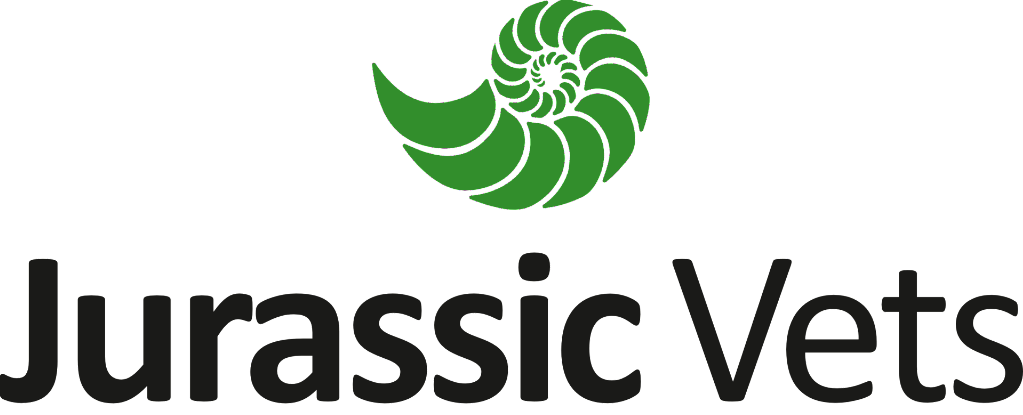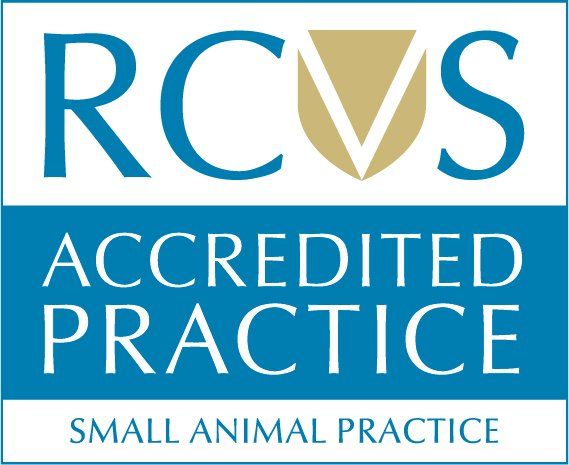What happens when you leave your pet at the Vet?
Many clients will bring their pet to their vets for routine surgical procedures (e.g., neutering) - but what happens to your pet during their day at the practice? Stuart, our Practice Manager, thought it would be useful to explain what happens.
As an RCVS-accredited practice, Jurassic Vets goes the extra mile to make sure your pet is safe and happy during their stay. Today we are following Stuart's own cat, Hinty, through her neutering operation (spay). Hinty's operation will prevent her from having accidental litters and mean that she will be ready to safely start going outdoors once she is old enough.
Keep scrolling to follow Hinty's journey!
Step One - Admittance
Animals booked in for surgery have an appointment with a nurse, usually between 8:30 and 9:00 in the morning.
The nurse will examine the animal, making sure they are well and fit for surgery, and check that they have not been fed overnight as planned – the nurse will also ask about any additional procedures such as dematting, anal gland emptying or claw clips that they may wish to have done whilst Hinty is under anaesthetic.
The nurse will then discuss the operation and ensure that the client has read and understood the consent form that all owners must sign prior to surgery, answering any questions the owner has for them.
Step Two - Pre-surgery
Once the owner has signed the consent form, the pet will be taken through to the kennelling area. All admitted pets are given their own kennel with warm, comfortable bedding in to wait in prior to surgery.
We have separate cat and dog wards in Colyton, and in Sidmouth we separate the species so that they can’t see each other. This keeps stress is kept to a minimum.
If you elected for blood tests to check the health of your pet prior to surgery, these will be taken now. We have an in house laboratory, so the results are available within 15 minutes.
Step Three - Pre-medication
Approximately 30 minutes before surgery, your pet will be checked by the operating vet and an appropriate pre-medication will be given. This pre-medication, normally given by injection under the skin, combines a mild sedative and a pain relief medication. Pre-medication minimises the amount of anaesthetic required which helps to keep your pet relaxed, as well as to providing a safe, smooth recovery.
As you can see, Hinty is very relaxed!
Step Four - Anaesthesia
The majority of anaesthetics are administered by injection into the vein running down the front leg of your pet (the cephalic vein). Hair will need to be clipped off the leg to do this, so don’t be surprised if you see a little bald patch when your pet goes home at the end of the day.
Once your pet’s asleep, a tube is passed down the windpipe to enable oxygen and a gas anaesthetic to be administered – this will keep your pet anaesthetised while the operation takes place.
Here Hinty is being clipped in preparation for her intravenous cannula.
Step Five - Patient preparation
Once your pet is asleep, a nurse will prepare them for surgery. This usually involves shaving a large area. Owners are often surprised at the amount that needs to be clipped off for even a small operation, but it is important that the skin surrounding the operation site can be thoroughly cleaned and that hair doesn’t get in the way or enter the site during the operation.
Once the hair has been removed, the surgical site is cleaned and sterilised.
The operation will not start until we are satisfied that our patient has been sufficiently prepared for surgery.
Step Six - Surgery
When the patient is prepared, your pet will be taken from the "prep area" into theatre where the operation will take place. Both of our sites feature a fully-equipped operating theatre that is never used for anything other than sterile surgery. Vets and nurses working in this area will be suitably gowned and gloved to prevent dirt and infection getting into the theatre. From the point where your pet was anaesthetised, and throughout the surgical procedure, their heart, respiratory rates, temperature, blood pressure, oxygen saturation and many other parameters are monitored continually by a nurse who remains with your pet the whole time. These rates are recorded so that any changes are noted instantly and levels of anaesthesia can be adjusted. The veterinary surgeon or nurse may choose to give intravenous fluids, particularly to older or unwell animals, as they help maintain a safe blood pressure.
In this instance, Stuart had elected to have Hinty microchipped when under anaesthetic - here is her microchip being injected under her skin and checked by the microchip scanner, while Peter prepares to begin surgery. Hinty's surgery takes about fifteen minutes and goes very smoothly.
Step Seven - Recovery
Once surgery is completed, your pet will have the anaesthetic gas turned off but the tube in their windpipe remains in place delivering oxygen until your pet has come round sufficiently to allow it to be removed. Your pet is then moved back into the "prep area" where a nurse will remain with them until they are safely awake and aware of their surroundings.
Once we are happy that they have fully recovered, they’re taken back to their kennel area to rest.
It is usually at this point that the owner is phoned to let them know everything is OK and their pet is recovering from surgery.
Step Eight - Discharge
In the afternoon an appointment will be made with a nurse (or sometimes the vet) to discharge your pet. We now take time to discuss with you any post-operative care needed e.g. care of any dressings, preventing your pet from licking any stitches, what level of exercise and food to give in the next few days. Any post-operative treatment like antibiotics or pain relief are also discussed and dispensed.
Step Nine - Post-operative checks
Depending on what the operation was for, a post-operative check is usually arranged for 2-4 days time – usually with the nurse. Here we can discuss any problems you are having, and wounds and stitches checked to ensure they are healing well.
We find that if a client knows what is happening to their pet, they are much happier and it causes them less anxiety. If you are ever worried about what will happen to your pet once they pass through the “big door to the back”, you should ask as many questions as you want so your vet can put your mind at rest.
At Jurassic Vets we would be happy to arrange for clients to view the prep and operating area before their pet comes in if they are particularly worried although, this needs to be arranged in advance as these appointments will be in the afternoon when the theatre is less likely to be in use.
JURASSIC VETS SIDMOUTH
01395 208620
contact@jurassicvets.com
12 Woolbrook Road
Sidmouth, EX10 9UU
OPENING HOURS
- Mon - Fri
- -
- Saturday
- -
- Sunday
- Closed
JURASSIC VETS COLYTON
01297 613000
contact@jurassicvets.com
Town Mill,Rosemary Lane
Colyton, EX24 6LS
OPENING HOURS
- Mon, Fri
- -
- Tue - Thu
- -
- Sat - Sun
- Closed
Jurassic Vets Limited - registered in England and Wales | Company Registration Number 12993183 | Registered Office: 12 Woolbrook Road, Sidmouth, Devon, EX10 9UU



















